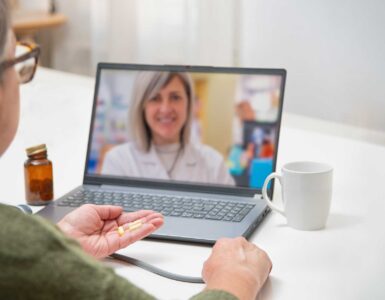Closely-held S1 Biopharma expects to initiate a Phase 2b study at the end of the year with its lead product candidate for female hypoactive sexual desire disorder (HSDD), Lorexys, and a Phase 2a program with a second therapy, Orexa, for male HSDD.
“HSDD is characterized by a lack or absence of sexual fantasies and desire for sexual activity, causing marked distress or interpersonal difficulties,” Nick Sitchon, CEO, says in an interview with BioTuesdays.com.
The condition has been medically recognized for more than 40 years. Low sexual desire becomes HSDD when the condition becomes distressing enough that a man or woman seeks medical attention, he points out, noting that HSDD is a psychiatric disorder, not a physical disorder such as erectile dysfunction or pain during intercourse.
Mr. Sitchon notes that a healthy libido requires not only normal hormone levels, but also a balance of three neurotransmitters in the brain: dopamine, norepinephrine, and serotonin, which are known to regulate sexual inhibition and sexual excitation.
“We are advancing a strong pipeline for sexual dysfunction, targeting a non-hormonal central nervous system approach to restore balance of key neurotransmitters in the brain that affect sexual desire.”
Mr. Sitchon explains Lorexys is an oral, non-hormonal, fixed-dose combination of two antidepressants: bupropion and trazodone, which are well known in the medical community.
Lorexys is formulated with a ratio that is precisely balanced to neutralize the perceived side effects of its individual components and maximize efficacy. The combination also balances out the effects of each drug to reduce the risk of adverse events.
An estimated 12 million women and eight million men suffer from HSDD in the U.S. According to a 2015 study by Morgan Stanley, treatment of HSDD in women represents an estimated $5-billion global market.
Lorexys works by controlling dopamine, norepinephrine, and serotonin, which are known to regulate sexual inhibition and sexual excitation.
In an earlier 30-patient Phase 2a study, a moderate dose of Lorexys demonstrated a 38% stronger efficacy than the use of bupropion alone, a widely used off-label treatment for female HSDD. The study’s primary endpoint was female sexual function index – desire subscale (FSFI-D), which is a quantifiable assessment of changes in sexual desire accepted by the FDA.
The Phase 2a study analysis also revealed that many women experienced remission, by moving into a normal FSFI-D range. “We were very happy to note that 58% of women reached remission-level at the end of four weeks of treatment,” says John Kaufmann, CFO of S1 Biopharma.
The only drug approved in the U.S. for female HSDD is Valeant Pharmaceuticals’ Addyi, or flibanserin.
Recent reports have indicated Addyi sales have been below projections based on factors that include high cost, limited efficacy and required restrictions on drinking alcohol. Earlier this year, Valeant cut its Addyi sales force but expects to relaunch the product later this year. In addition, Valeant ended its relationship with distributor, Philidor Rx Services.
The history of flibanserin has been plagued by controversy and setbacks, as the FDA previously rejected the drug twice. In 2010, when Boehringer Ingelheim owned the medication, the agency determined that clinical data did not demonstrate sufficient efficacy. In 2013, the agency once again concluded that flibanserin did not demonstrate sufficient increases in sexual satisfaction.
The FDA approved Addyi in August 2015 with a boxed warning to highlight the risks of severe hypotension and syncope in patients who drink alcohol during treatment with Addyi or have liver impairment. The FDA also imposed an 18-month restriction on consumer advertising and required both physicians and pharmacists to be certified prior to prescribing or fulfilling Addyi prescriptions.
“Because the first drug approved for HSDD has faced considerable challenges, some industry insiders have mistakenly concluded that HSDD is not a major unmet need, ignoring a potential $5-billion commercial opportunity,” Mr. Sitchon says.
“But our research shows clearly that women want a safe and effective treatment for HSDD and that an effective drug has blockbuster potential. They’re looking for a restorative treatment that can be taken in convenient and practical terms, and Lorexys has the potential to be that drug.”
Mr. Kaufmann says that Lorexys differentiates itself from Addyi in several important ways.
According to a 2015 study by Morgan Stanley, treatment of HSDD in women represents an estimated $5-billion global market.
While Addyi demonstrated a 10% to 13% improvement in FSFI-D responder rates, compared with placebo, he points out that Lorexys had a much greater separation from control in the Phase 2a study, suggesting that Lorexys has the potential of far greater efficacy.
Regarding the hypotension and sedative issues surrounding Addyi, Mr. Kaufmann says there were no dropouts due to these events in S1 Biopharma’s clinical studies for Lorexys. “We feel very comfortable with Lorexys’ safety profile.”
Last December, S1 Biopharma signed a commercialization agreement for Lorexys with CKD Pharmaceuticals, giving CKD rights to commercialize Lorexys in South Korea. CKD also has right of first refusal for commercialization agreements related to additional potential indications for Lorexys.
Mr. Sitchon says S1 Biopharma is considering additional commercialization strategies in other global markets and “we continue to be very encouraged by the levels of interest in the Lorexys program.”
The company plans to enroll up to 300 patients in its Phase 2b study of Lorexys at clinical sites in North America and Europe. Enrollment is set to begin at the start of 2017, with final data available in early 2018. The primary endpoint is FSFI-D.
In addition to Lorexys, S1 Biopharma is developing Orexa for male HSDD and Mr. Sitchon says a Phase 2a trial for Orexa is expected to run concurrently with the Phase 2b for Lorexys. Data for the Orexa trial are expected in the second quarter of 2018.
“After the treatment of erectile dysfunction, the next frontier in men’s sexual health is desire,” Mr. Sitchon contends. “In cases of sexual dysfunction for men, erectile dysfunction is always assumed. But in many cases, the problem is not physical, but a lack of desire.”
For the millions of men and women who are affected by HSDD, the availability of a safe and effective treatment option can have a profound impact on their health and relationships, he adds.







